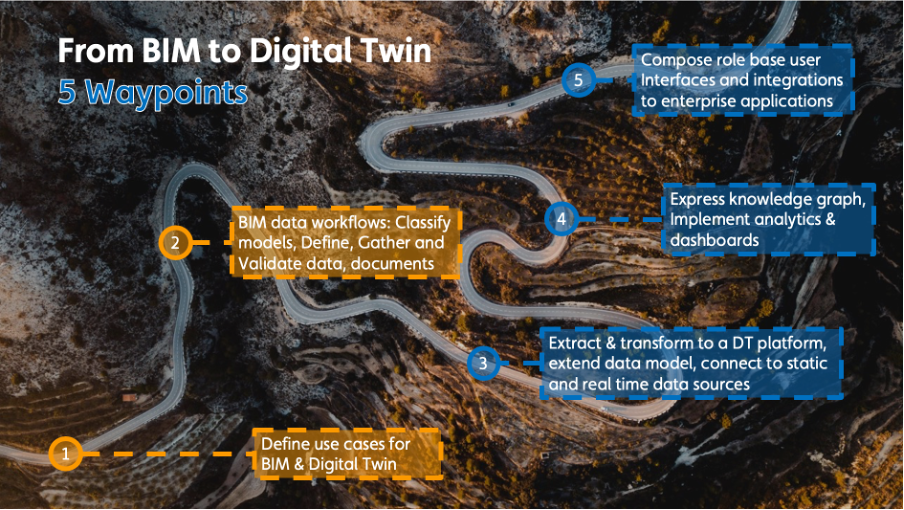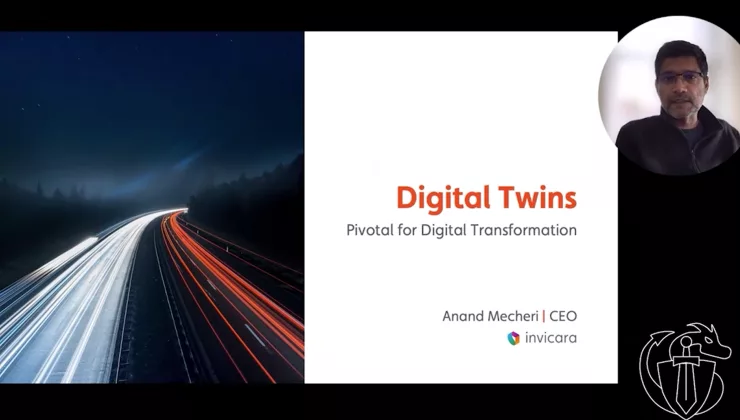Digital Twins. Pivotal for Digital Transformation

Chief Executive Officer, Co-Founder
I recently had the opportunity to participate at the BIM Coordinators Summit 2021, a virtual conference that saw 2,000 people attend over the two days, to talk about Digital Twins within the context of Post Construction.
What is a Digital Twin?
There is much confusion about what a Digital Twin actually is, so using the definition outlined by the Digital Twin Consortium, I explained that a Digital Twin:
1. is a virtual representation of real-world entities and processes, synchronized at a specified frequency and fidelity.
2. Is motivated by outcomes, tailored to use cases, powered by integration, built on data, guided by domain knowledge, and implemented on a specialised platform
3. transforms business by accelerating holistic understanding, optimal decision-making, and effective action.
How to transcend from BIM to a Digital Twin?
Key to my presentation was to iterate that the first stage of any Digital Twin is to the define the use cases, and indeed this came up during the Q&A where a delegate asked if a Digital Twin always requires an associated 3D model. The answer to this question was “not necessarily”, the use case determines the need for 3D visualisation. The core of Digital Twin is the data model, and contextual representation of the data, ideally as a knowledge graph. When elements in the data model can be visualised in 3D, the efficacy of many use cases are enhanced, and many new use cases can be achieved.

Once the use cases are defined, it becomes easier to define the information required to deliver the outcomes. BIM is a great source of such information, but for it to be usable, models and all data must be classified and validated to ensure trust and machine readability.
Why bother at all with a Digital Twin?
We know that every new development can be delivered as a Digital Twin, adding value to the BIM process. We tell our partners and clients, “Don’t underestimate the value that a perfect digital handover delivers”. The impact it has on efficient operations and maintenance workflows and the consequent financial reward is very significant for the asset operator. We recently wrote a blog on this very topic, and I invite you to read this if you haven’t already.
COP 26 has recently ended with countries and companies alike agreeing to decarbonise their assets and operations. Much work, at all lifecycle stages, is required to decarbonise the built environment, and Digital Twins are key to this. From tracking embodied carbon to inform design decisions, to tracking operational carbon generated from consumption of electricity, natural gas, water and waste generation, Digital Twins provide the path to Net Zero Carbon.
Please click here to listen to my presentation at the BIM Coordinators Summit and please use the comments section below to let me know if you agree with me.
Anand Mecheri is the CEO & Co-founder of Invicara. You can hear more from Anand at https://invicara.com/resources...




